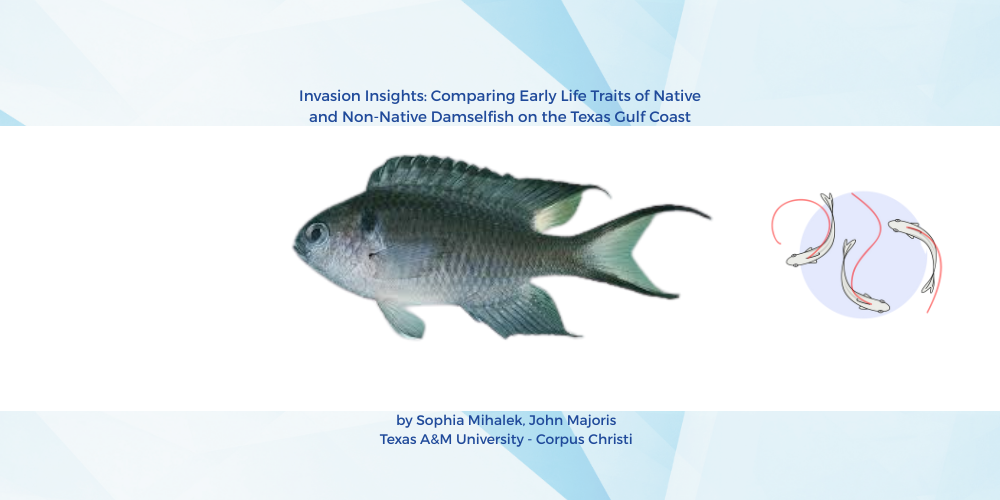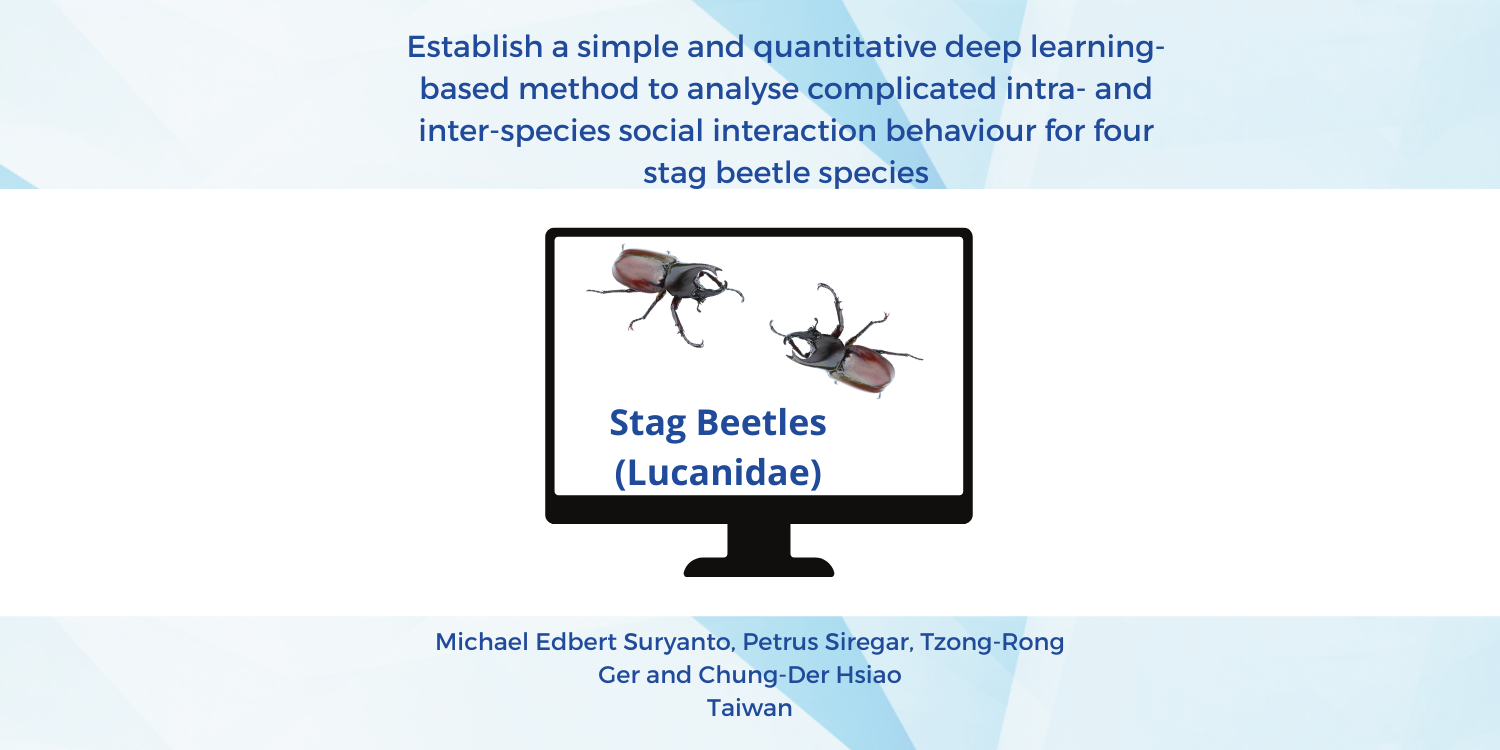The delicate balance of marine ecosystems is increasingly threatened by human activities and climate change, creating conditions that promote the spread of non-native marine species. These invaders can outcompete native organisms, disrupt food webs, and damage ecosystem services. Identifying the traits that help these invaders thrive is key to improving species management and control.
One such invader is the regal damselfish (Neopomacentrus cyanomos), native to the Indo-Pacific. An ongoing study, presented at the 48th Larval Fish Conference in Quebec, led by Sophia Mihalek and John Majoris from Texas A&M University in Corpus Christi, compares the life history traits of this non-native species with native Atlantic damselfish to understand the mechanisms behind its spread .It shows that it was first recorded in the Atlantic in 2013 and has rapidly expanded across the Gulf of Mexico and the Caribbean Sea.
The study aims to assess growth rates and age, compare larval behavior and morphology among N. cyanomos and two native damselfish species, A.multineata and S.partitus. The hypothesis is that N. cyanomos exhibits early life history traits such as faster growth rates, increased swimming speeds, greater fin development, larger larval size and weight, and more active and directed swimming, which may provide a competitive advantage over native species.
Methods
The researchers employed a multi-faceted approach to investigate the life history traits of these damselfish species. They examined the microstructure of otoliths (ear stones) from wild-caught adult specimens to calculate age, larval growth rates, and time to settlement. Otoliths, which grow throughout a fish's life, provide a reliable method for determining a fish's age and growth history.
In addition to otolith analysis, the researchers also kept adult damselfish in aquaculture tanks and encouraged them to spawn. The resulting larvae were reared and assessed throughout their development. This involved behavioral tests in a ZebraBox, a device used to track the movement and behavior of small aquatic organisms, and morphological examinations. The behavioral tests measured average swimming speed, maximum swimming speed, time spent moving, distance traveled, and turning angles.
Expected Outcomes
Through this comprehensive study, the researchers expect to:
-
Quantify and compare growth rates and larval age to determine if N. cyanomos develops quicker than native species.
-
Identify morphological traits that may enhance dispersal or survival, potentially contributing to the species' invasive success.
-
Reveal behavioral differences that may give N. cyanomos a competitive advantage over native species.
-
Assess how life history traits contribute to the invasion success of N. cyanomos.
-
Identify traits that could be used to predict invasive potential in other non-native reef fishes.
Discussion
The rapid expansion of N. cyanomos in the Atlantic is a cause for concern. Understanding the mechanisms behind its spread is crucial for developing effective management and control strategies. By comparing the life history traits of N. cyanomos with native damselfish species, this study provides valuable insights into the competitive advantages that may facilitate its invasion.
The use of otolith analysis and behavioral tests in this study offers a comprehensive approach to understanding the early life history traits of these species. The findings could have significant implications for the management of non-native marine species, not just in the Texas Gulf Coast, but also in other regions facing similar invasive threats.
Moreover, the identification of traits that could predict invasive potential in other non-native reef fishes is a significant step towards proactive management. By identifying these traits, researchers and conservationists can prioritize their efforts and resources towards species that pose the greatest invasive threat.
Conclusion
The study presented by Mihalek and Majoris at the Larval Fish Conference in Quebec sheds light on the early life history traits of native and non-native damselfish along the Texas Gulf Coast. The findings underscore the importance of understanding the mechanisms behind the spread of non-native species to improve species management and control.
As human activities and climate change continue to reshape our marine ecosystems, studies like this are more important than ever. They provide the knowledge and tools we need to protect our native species and preserve the delicate balance of our marine ecosystems.
We look forward to seeing the results of this study and congratulate Sophia Mihalek and John Majoris on their remarkable work.





